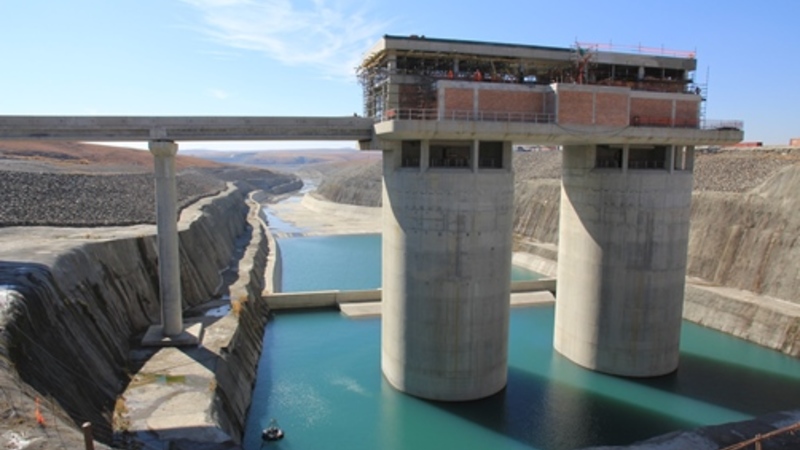PBS: Escaping Eritrea … [Read More...] about ካብ ውሽጢ ቤት ማእሰርታት ኤርትራ
Eskom’s Ingula, Africa’s largest water-pumped power scheme, reaches completion
Thulebona Mhlanga | 13 Dec 2017 | Mail & Guardian

Nestled in the verdurous Drakensburg mountain range is Africa’s largest water-pumped electricity storage scheme. Ingula is more than just an electricity generating facility, it serves as an example of how eco-friendly principles can be married with development.
Eskom’s Pumped Storage Power Scheme is located in an area originally named Braamhoek, later renamed Ingula in 2007, the isiZulu word for the creamy foam of a milk on a calabash used in both kwaZulu-Natal and Free State.
The pumped storage scheme is built between the upper Braamhoek dam and the lower Bedford dam — each capable of holding 22 million tons of water — and brings 1332 Megawatts into South Africa’s electricity national grid. South Africa needs 40 000MW by 2025 for its electricity demand.
The hydroelectric power plant project cost Eskom approximately R30-billion, with the final phase connecting a fourth power unit onto the grid being completed in January.
The scheme was built by the state owned entity-Eskom and is to be one of three water schemes to deal with South Africa’s huge electricity demand. It does not operate 24/7, only generating electricity on demand, particularly during high-use periods like winter. Once the water is pumped into the turbine, it takes less than four minutes to generate onto the grid.
A 2017 tech-economy study report, looking at Energy Storage and Technology and Market Assessment options for South Africa, found that the adoption of energy storage technologies could save South Africa the billions it spends on coal. The report also suggests that these could also be used to improve South Africa’s electricity supply.
More importantly energy storage schemes may be replace some of Eskom’s power stations that are slowly reaching the end of their lifespan, says the report. Plants such as Ingula offer a way to offset South Africa’s reliance on diesel and other fossil fuels for power.
“To generate electricity during peak times requiring high demand, water is released from the upper dam, passing through the pump/turbines into the lower dam. The reverse happens during times of low energy demand, the pump/turbines are used to pump the water from the lower dam, back to the upper dam,” explains Nonhlanhla Shezi a visitors officer at the Ingula Scheme.
Cognisant of the country’s water crisis, the power scheme does not waste any water during off-peak demand as the water used is also pumped back into the upper reservoir.
Since the beginning of the year, more than 600mm of rain has fallen into the reservoir — approximately half of the area’s annual rainfall. Currently, Ingula has more than enough water capacity to generate electricity capacity that can last up to 16 hours, calculated at 21 000 MWH.
Referred to as Africa’s watershed, Ingula flows into the Atlantic and Indian oceans. The scheme is also surrounded by a number of wetlands that exists on the property. These wetlands connect water to the Vaal River system feeding into Gauteng and Tugela river in the Kwazulu-Natal.
The 800 000 hectares of land that Eskom initially bought does not only connect electricity to South African homes and businesses, but is also at the centre of a harmonious ecosystem.
“The biodiversity in the area is kept in a very unique way, it’s not just the wetlands but the higher altitude grasslands, some of which is indigenous, which falls within our scope to ensure that we maintain indigenous grass in the area to maintain habitat,” says Shezi.
The Ingula wetland is home to 320 bird species, plants, mammals and indigenous grasslands as well as South Africa’s endangered White-winged Flufftail, which birders get a chance to see annually.
In its efforts to protect the hundreds of birds species in the wetland, Eskom has formed the Ingula Partnership with Birdlife South Africa and Middelpunt Wetlands Trust.
Thulebona Mhlanga is financial trainee journalist at the Mail & Guardian, currently enrolled for a masters in politics at the University of Johannesburg.
